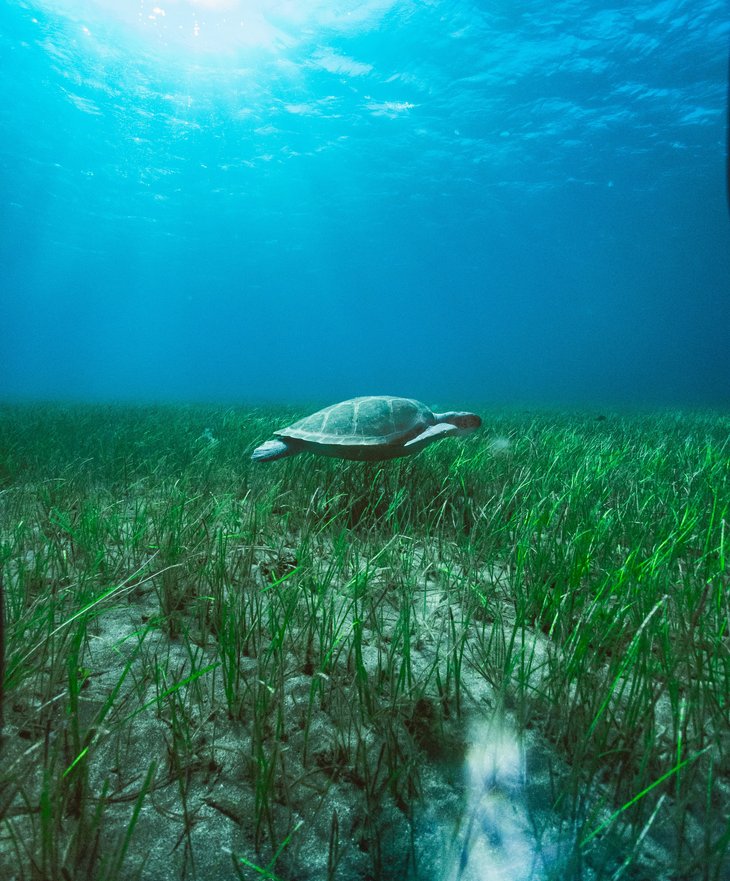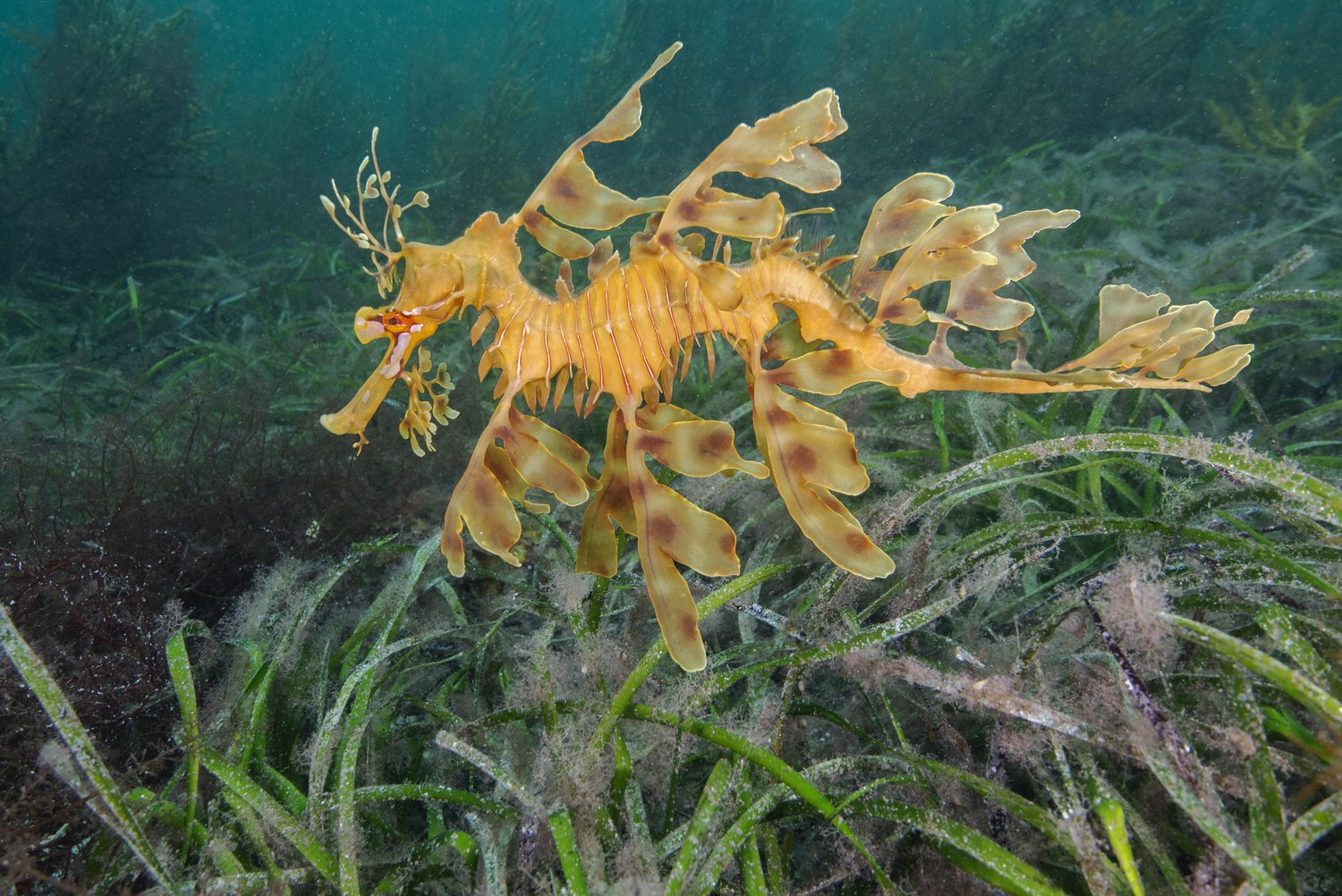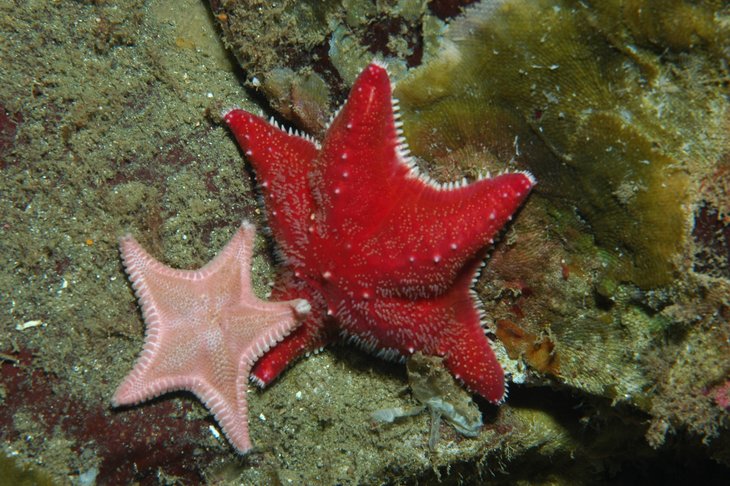Coasts, seas and oceans are heavily and diversely utilised, polluted by waste and contaminants and altered by man-made climate change. Their poor state of health is the result of human activity. A key measure for more effective marine protection aims to create marine areas in which people do not use the ocean at all or only to a limited extent. The aim is to create refuges for marine communities around the world where ecosystems can develop undisturbed and biodiversity is preserved.
No Marine Protected Area Is Like the Other
Protected areas are designed to protect marine life and their habitats from human interference by prohibiting or regulating certain human activities. However, the individual areas differ greatly in their conservation objectives and management approaches. No two protected areas are the same.
Protecting a marine area helps to conserve local species and habitats. Migratory species benefit most from protected areas if they are interconnected over larger areas and are located in regions where marine species mate or raise their young.
The number of marine protected areas has increased in recent years. However, due to the different definitions and standards of protected areas, there is not just one statistic, but several. When figures are quoted, it is therefore always important to consider who compiled the statistics and which selection criteria were used as a basis.
Three Percent "No-Take Zones"
According to the Marine Protection Atlas, only three per cent of the global ocean area was considered fully protected from fishing in February 2025. At that time, the atlas listed 221 strictly protected marine areas in which fishing and other resource extraction or destructive activities were prohibited (no-take zones). The two largest of these were in the Southern Ocean (Ross Sea Sanctuary) and off the north-west coast of Hawaii (Papahānaumokuākea Marine National Monument). Many smaller protected areas with fishing bans were found in tropical and subtropical waters - mostly where biodiversity is particularly high.
According to the WDPA Protected Areas Database, there were also more than 16,000 protected areas around the world where fishing and other resource extraction was partially permitted. These ‘less protected’ areas also included the marine protected areas in the German North Sea and Baltic Sea. According to the WDPA, a total of 8.34 per cent of the world's oceans were protected to some extent in February 2025.
The 30 x 30 Protection Goal
By the year 2030, 30 percent of marine areas are to be designated as protected areas, with one third of them (10 percent of the total area) being completely no-take zones. This goal was agreed upon by the member states of the International Biodiversity Convention in the Kunming-Montreal Global Biodiversity Framework agreement.
The European Union has enshrined this goal in its biodiversity strategy. The relevant legal framework for implementation is formed by the EU Birds Directive, the European Flora-Fauna-Habitat Directive, and the EU Marine Strategy Framework Directive.
Conservation objectives and limits
While the specific conservation goals of different protected areas may differ, there are commonalities that aim to preserve species, habitats and ecosystem functions. In the Agreement on Marine Biological Diversity of Areas beyond National Jurisdiction (BBNJ), the member states have agreed on a common definition of marine protected areas. This reads: ‘A “marine protected area” is a geographically defined marine area that is designated and managed to achieve specific long-term biodiversity conservation objectives. Sustainable use may be authorised where appropriate, provided it is compatible with the conservation objectives.’
Marine protected areas can offer little or no protection against environmental hazards that are dispersed by ocean and air currents over large areas and across all boundaries. These include rising water temperatures, oxygen depletion and increasing acidification of seawater, as well as nutrient pollution, contamination, disease, invasive species and sea-level rise.

The effectiveness of protected areas depends largely on the extent to which the announced conservation measures are actually implemented. If a marine protected area fails to achieve its conservation goals because none of the announced restrictions or measures have been implemented, it is referred to as a protected area that only exists on paper - a paper park.
When it comes to marine conservation, it is therefore not just the size or number of protected areas that matters (quantity), but also how well marine protected areas actually fulfil their conservation task and how compliance with the conservation measures is monitored (quality). It also plays a role whether protected areas serve to conserve local habitats and thus in particular sedentary or territorial species (coral reefs, seagrass beds, submarine mountains, kelp forests, etc.) or whether migratory or mobile species (e.g. fish, sharks, whales) are to be protected. Depending on the conservation objective, the effectiveness of the areas can vary greatly.
Solutions for people and the ocean
When designating protected areas, conflicts of interest arise in particular if the areas in question have been heavily utilised by humans to date. The interests of all user groups must therefore be taken into account when planning protected areas. The chances of success increase if protected areas are planned, implemented and monitored in an inclusive and transparent manner and if existing user groups can be shown alternative sources of income.
Scientific analyses are needed to assess the development and success of a protected area. These must be carried out regularly and over longer periods of time in order to determine whether the protected area is having a positive impact on the ecosystems concerned and which species are benefiting from the protected zone. Methods are also needed to visualise and assess the advantages and disadvantages of protection for humans, the sea and society at an early stage. Such predictions can help to implement a protection zone together with the various user groups of a marine area.

Focus topic: Marine protected areas
Protected areas are an important instrument for strengthening biodiversity, ecological functions and services of coasts, seas and oceans - provided that protection measures are implemented effectively. This focus article provides an overview of marine protected areas and explains the planning, effectiveness and challenges of their implementation.









